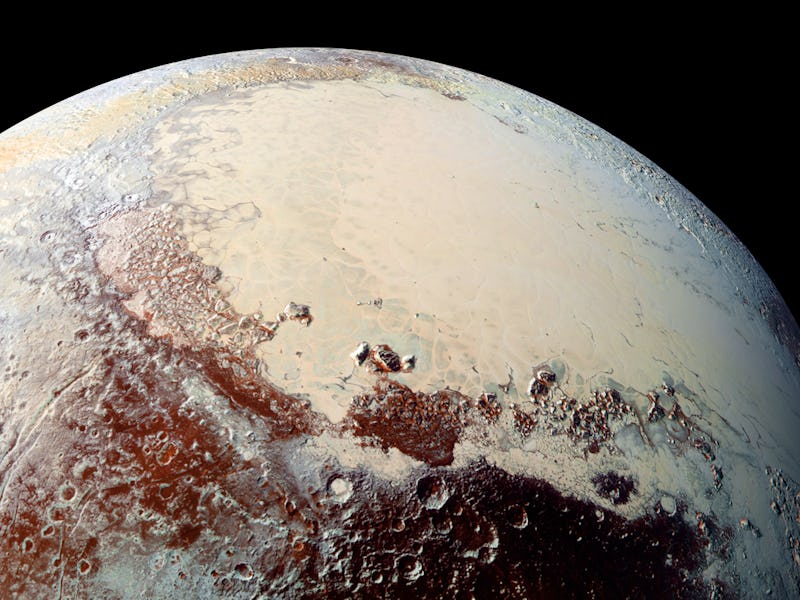Pluto Has Mountains, Massive Craters, and the Potential for Ice
We know now that Pluto is just more than an icy rock.

In July, the New Horizons flyby held the world in thrall as it brought humankind closer to Pluto and its moons than ever before. Now, just three months later, the team behind the history-making probe has published its first research paper in the journal Science, describing the surprising complexity of the tiny non-planet.
The planet we once thought was just an icy rock turns out to be, well, an icy rock with a huge amount of variation on its surface. Massive craters up to 260 kilometers in diameter were found in the darkly shaded Cthulhu Regio, some of which were lined with ice.
The Sputnik Planum region features level plains and a series of mountains rising two to three kilometers above the surface, which the researchers theorize must be formed from materials that wouldn’t collapse under their own weight over millions of years.
“The mountains detected by New Horizons imagery therefore imply the presence of a widespread, stronger, presumably water ice–based, solid ‘bedrock,’” the authors write.
Pluto's atmospheric hazes are, surprisingly, sky blue.
The higher albedo, or surface reflectivity, around Sputnik Planum’s hills suggest that bulk flow of liquid nitrogen, carbon monoxide, or methane — which were found lining craters in their frozen form — could have occurred.
The New Horizons flyby also allowed researchers to profile Pluto’s moons. Charon, the biggest of the three, shows signs of substantial resurfacing and features a weirdly dark spot, appropriately referred to as Mordor Macula.
Charon, the largest of Pluto's moons.
“The Pluto system surprised us in many ways, most notably teaching us that small planets can remain active billions of years after their formation,” said first author Alan Stern in a release. Much more research is sure to follow, considering the vast amount of data New Horizons sent home. This paper just scratches the surface.